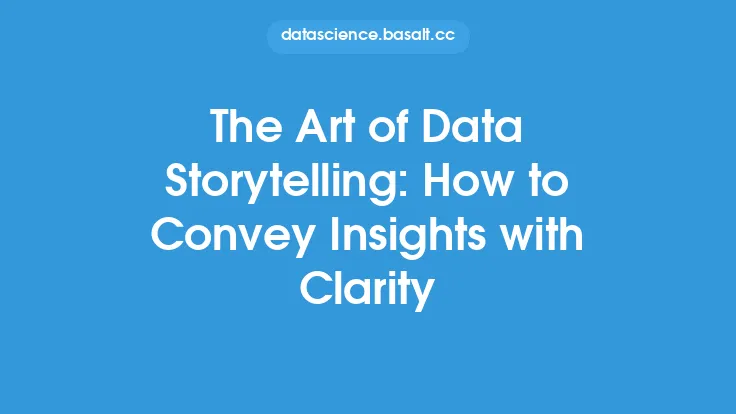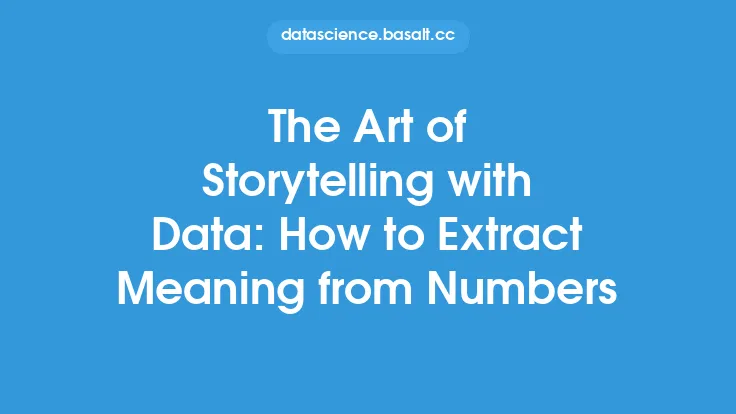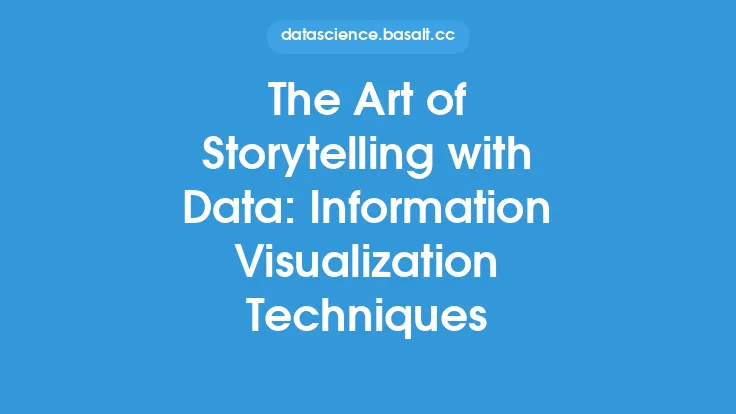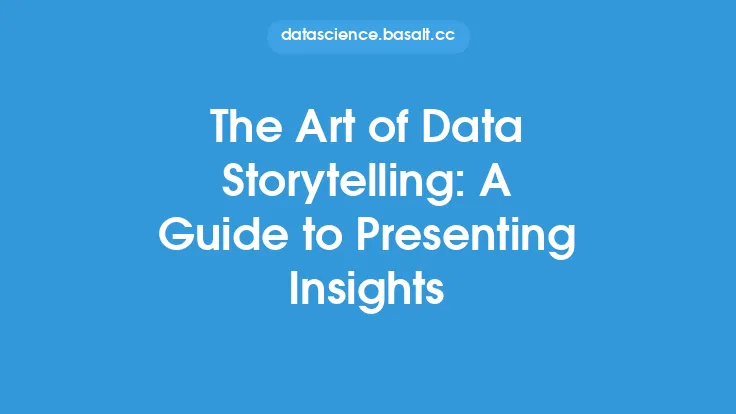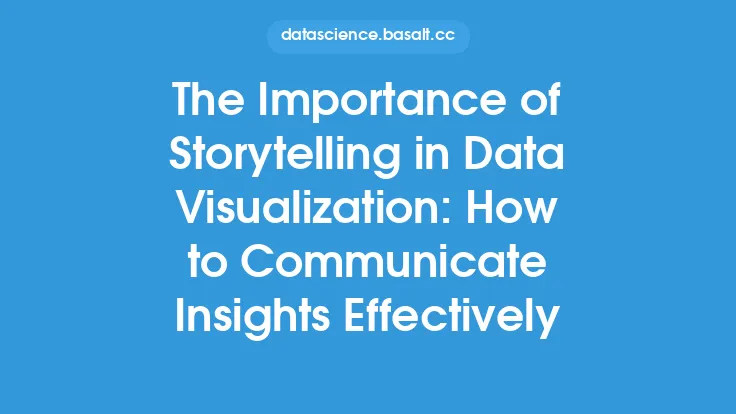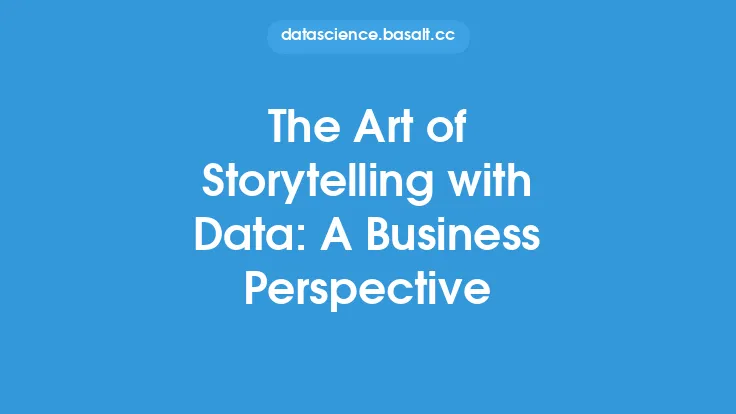Data narrative is a crucial aspect of data storytelling, as it enables individuals to convey complex insights and findings in a clear and concise manner. The art of data narrative involves using a combination of data visualization, storytelling techniques, and effective communication to create a compelling narrative that resonates with the audience. In this article, we will delve into the world of data narrative, exploring the key principles, techniques, and best practices for conveying insights with clarity.
Understanding the Importance of Data Narrative
Data narrative is essential in today's data-driven world, where organizations and individuals are constantly seeking to extract insights and meaning from complex data sets. By using data narrative, individuals can create a clear and concise story that communicates the key findings and insights, making it easier for stakeholders to understand and make informed decisions. A well-crafted data narrative can help to identify trends, patterns, and correlations, and provide a framework for exploring and analyzing complex data sets.
Key Principles of Data Narrative
There are several key principles that underpin effective data narrative. These include:
- Clarity: The narrative should be clear and concise, avoiding technical jargon and complex terminology that may confuse the audience.
- Relevance: The narrative should be relevant to the audience, taking into account their needs, interests, and level of understanding.
- Context: The narrative should provide context, including background information, definitions, and explanations, to help the audience understand the insights and findings.
- Storytelling: The narrative should use storytelling techniques, such as anecdotes, examples, and metaphors, to make the insights and findings more engaging and memorable.
- Visualization: The narrative should use data visualization techniques, such as charts, graphs, and tables, to illustrate the insights and findings and make them more accessible.
Techniques for Crafting a Compelling Data Narrative
There are several techniques that can be used to craft a compelling data narrative. These include:
- Using a clear and concise structure: The narrative should have a clear and concise structure, including an introduction, body, and conclusion.
- Creating a narrative arc: The narrative should have a narrative arc, including a setup, confrontation, and resolution, to create a sense of tension and drama.
- Using storytelling devices: The narrative should use storytelling devices, such as foreshadowing, flashbacks, and cliffhangers, to create a sense of suspense and engagement.
- Incorporating visual elements: The narrative should incorporate visual elements, such as images, videos, and infographics, to illustrate the insights and findings and make them more engaging.
- Using interactive elements: The narrative should use interactive elements, such as quizzes, polls, and games, to encourage audience engagement and participation.
Best Practices for Effective Data Narrative
There are several best practices that can be used to ensure effective data narrative. These include:
- Knowing the audience: The narrative should be tailored to the audience, taking into account their needs, interests, and level of understanding.
- Using simple and intuitive language: The narrative should use simple and intuitive language, avoiding technical jargon and complex terminology that may confuse the audience.
- Providing context: The narrative should provide context, including background information, definitions, and explanations, to help the audience understand the insights and findings.
- Using visualization effectively: The narrative should use visualization effectively, including selecting the right type of visualization, using color and annotation effectively, and avoiding clutter and confusion.
- Testing and refining: The narrative should be tested and refined, including gathering feedback from the audience and making revisions to improve clarity, relevance, and engagement.
Technical Considerations for Data Narrative
There are several technical considerations that should be taken into account when creating a data narrative. These include:
- Data quality: The data should be of high quality, including being accurate, complete, and consistent.
- Data visualization tools: The narrative should use data visualization tools, such as Tableau, Power BI, or D3.js, to create interactive and dynamic visualizations.
- Storytelling frameworks: The narrative should use storytelling frameworks, such as the hero's journey or the pyramid principle, to create a clear and concise structure.
- Interactive elements: The narrative should use interactive elements, such as JavaScript or HTML5, to create engaging and immersive experiences.
- Accessibility: The narrative should be accessible, including being optimized for different devices, browsers, and screen readers.
Conclusion
Data narrative is a powerful tool for conveying insights and findings in a clear and concise manner. By using a combination of data visualization, storytelling techniques, and effective communication, individuals can create a compelling narrative that resonates with the audience. By following the key principles, techniques, and best practices outlined in this article, individuals can create effective data narratives that inform, engage, and inspire their audience. Whether you are a data analyst, business leader, or communicator, the art of data narrative is an essential skill for success in today's data-driven world.
